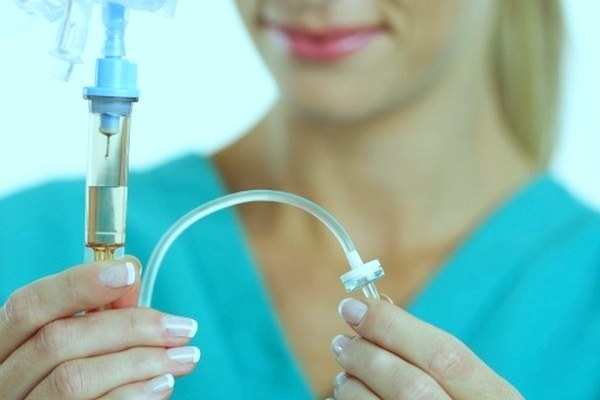Instruction
1
The goal of infusion therapy is to maintain body functions. Its objectives: to ensure the normal volume of water, blood plasma, restoration of properties of blood, detoxification, uniform and prolonged drug delivery, providing parenteral nutrition, normalization of immunity.
2
The most frequently used venous access. It is provided by vein puncture (for short droppers), venesection (if required continuous medication for several days), cannulation of a major vein (for infusion therapy lasting up to several months). Methods of infusion therapy: continuous (drip) and intermittent (bolus) infusion of. For jet injection of drugs used syringes, for continuous introduction of the use of drip infusion therapy.
3
The rate of introduction of the solutions measured in number of drops in 1 min. the Number of drops in 1 ml of solution will depend on the surface tension forces created by the solution, and the mold dimensions. Solutions for fluid therapy are divided into several groups: basic, objemozameshchati, correcting and drugs for parenteral nutrition.
4
Objemozameshchati drugs are divided: the artificial plasma substitutes, natural (autologous) plasma substitutes, blood and erythrocyte mass. They are used for compensation of volume of plasma, with a deficit of red blood cells or other plasma components, to restore the functions of blood. With the basic solutions in the body are injected drugs and nutrients. Corrective solutions are used in hypovolemic shock, the imbalance of ions.
5
In the course of infusion therapy continuously assess its effectiveness in changing the state of the pulse and the color of skin, lips, nails, kidney, respiratory system and Central nervous system. Before therapy, after its start-up phase and daily determine the concentrations of total protein, calcium, urea, glucose, NaCl, clotting time, prothrombin level, relative density of urine.
6
Complications of infusion therapy are: hematoma, tissue necrosis, damage to adjacent tissues and organs, thrombosis and phlebitis, embolism. May develop water intoxication, edema, acidosis, hyperthermia, anaphylactic shock, chills, circulatory disorders, overdose of drugs. There are complications associated with blood transfusions, overload of the circulation system in connection with the excess of the introduced solutions, and pulmonary edema.











